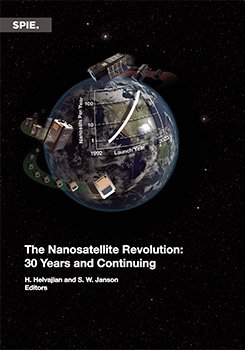|
The CubeSat has applications in three main sectors: education and training, technology demonstration, and commercial/operational applications, 4,5 where the applications sector is moving towards nanosatellite missions. In 2014, CubeSats were selected as one of the ten top scientific achievements or breakthroughs by Science magazine.7 CubeSat applications take advantage of ever-increasing performance and capacity of individual CubeSats, and the ability to create cost-effective networks and/or constellations of CubeSats carrying either the same payload to enhance re-visit frequency and coverage, or different payloads to perform more complicated tasks jointly. A good example of the first case is the Planet Labs Flock family, which has over 350 3U CubeSats on-orbit as of March 2019.8 With a 3U CubeSat size, it can attain Earth observation images at a few-meter-level ground resolutions. Meanwhile, thanks to its low cost, a network of a few hundred CubeSats becomes an affordable and commercially feasible offering. This chapter presents a small CubeSat constellation or network, named the STU-2 mission (also known as the TW-1 mission during its development phase), as a good example of the second case. It is a CubeSat constellation with multiple distributed payloads meant to explore integrated services for Earth observation and marine/air traffic information collection and monitoring. It is based on low-cost and off-the-shelf CubeSat technologies. It consists of three CubeSats: a single 3U CubeSat and two 2U CubeSats, carrying different payloads and instruments. The STU-2 mission was successfully launched by piggy-backing on the Long March 11 rocket on its maiden flight on September 25, 2015, from Jiuquan, China, into a low-Earth-orbit (LEO) sun-synchronous orbit (SSO) with an altitude of 481 km, inclination of 97 deg, and a local time of descending node (LTDN) at 8:00 a.m. |
|
|


